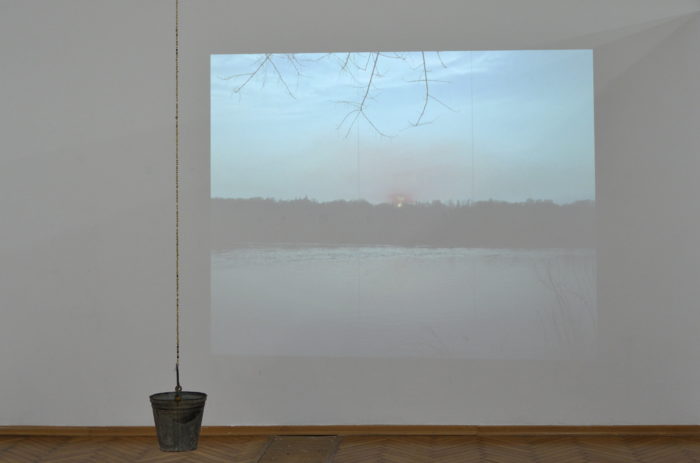Tomasz Sikorski
Zenon's Sun
video, 2min 26s, loop, 2014-2020
Untitled
object, 2020

Zenek
In my memories, Zenek appears in the first years of our acquaintance as an ambitious artist, passionate about new art (then, the term still made some sense), and a great organiser. He was a youth, then, of uncommonly long eyelashes, shy, with an avoiding gaze, a gentle smile and a peculiar manner of speech, decorated with grunts.
I met him in the spring of 1987, during an extraordinary event he organised, namely, the 2nd New Art Biennale. Zenek gathered funds and brought to Zielona Góra the so-called independent galleries with their artistic presentations from all over Poland. The Dziekanka Studio (which, in its final period, I ran together with Joanna Kiliszek) was represented by: Mirosław Bałka, Krzysztof Knittel, Zygmunt Piotrowski, Mikołaj Smoczyński, Marek Sobczyk, Ryszard Woźniak and myself. Exhibitions, shows and performances took place in various venues in the city. Including the streets. Throughout the few days of the Biennale, Zenek was in constant spin. We got to know one another closer and became friends only five years later.
One day, Zenek called me offering a job at a higher education institution in Zielona Góra (which was, then, the WSP [Higher School of Education]). As a deputy director of the emergent Institute of Art and Visual Culture, he asked me to run a graphic arts studio, proposing (then, a Master of Fine Arts) a quarter or maybe even one eight of a full-time senior lecturer position. It seemed unprofitable, crazy and unrealistic. The distance from Warsaw to Zielona Góra is 450km! Nevertheless, I accepted his offer, since a little daughter came into my life and one had to somehow take care of finances in the new, chaotic and uncertain reality of the early 3rd Polish Commonwealth. I worked at the Institute for 11 years, running, since 1994, one the first (if not the first) Intermedia Studio in Poland to award degrees. Artistically, we had a perfect understanding with Zenek, we discussed art and the university, we dreamt up plans for the next edition of the Biennale. We were somewhat separated by the thick cloud of cigarette smoke and wine fumes. We were instead connected by the radiant Magda and their doggy, (Joseph) Bojs.
Atmosphere at the developing Institute and my relationship with Zenek and several other people soured with the arrival of a new rector (somewhere around 2002) and changes he introduced, which I tried to understand, but could not in any way bring myself to accept their manner of implementation. Chaos and insecurity arose at the Institute. Antagonisms, schisms and secessions arrived. Relieved, but also regretful with an admixture of bitterness, I resigned from my position at the University of Zielona Góra, and my departure marked a severing of my relationship with Zenek as well.
Zenek's artistic awareness, his work, the following editions of the New Art Biennale he organised and his vision of a modern school of art contributed to the artistic animation of Zielona Góra, since they directed numerous local artists and students towards experiment, transgression and exploration of their own paths. The fruit was a number of original and distinctive artistic approaches, both in the young faculty of the Institute and its graduates. As happens in culture: neither the causes, nor the effects of the qualitative leap in art in Zielona Góra in the 1990s can be precisely measured or estimated. But it could be seen, heard and felt. And it is still visible today. Praise to him for that.
At The Flight of Icarus exhibition, devoted to the memory of Zenon Polus, I dedicate two pieces to him. One is SŁOŃCE ZENONA [Zenon's Sun] which is setting, but cannot set. That is (our) Zenon's paradox.
— Tomasz Sikorski, September 2020